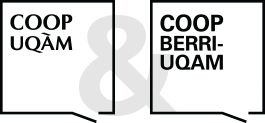Essentials of nonverbal assessment
McCallum, Steve
Éditeur : WILEY
ISBN papier: 047138318X
Code produit : 1260953
Catégorisation :
Livres /
Sciences humaines /
Psychologie /
Ouvrages généraux
Formats disponibles
| Format | Qté. disp. | Prix* | Commander |
|---|---|---|---|
| Livre papier | En rupture de stock** |
Prix membre : 42,74 $ Prix non-membre : 44,99 $ |
*Les prix sont en dollars canadien. Taxes et frais de livraison en sus.
**Ce produits est en rupture de stock mais sera expédié dès qu'ils sera disponible.
Description
Quickly acquire the knowledge and skills you need to confidently administer, score, and interpret nonverbal assessment tests Essentials of Nonverbal Assessment covers the nine most widely used nonverbal assessment tests––the Comprehensive Test of Nonverbal Intelligence (C-TONI); Tests of Nonverbal Intelligence-III (TONI-III); Universal Nonverbal Intelligence Test (UNIT); Leiter-R; Beta, Third Edition (Beta-III); Cognitive Abilities Test (CogAT); General Ability Measure for Adults (GAMA); Naglieri Nonverbal Ability Test, Multilevel Form (NNAT); and Raven’s Progress Matrices. To use the tests properly, professionals need an authoritative source of advice and guidance on how to administer, score, and interpret these tests. Written by Drs. McCallum and Bracken (creators of the UNIT) and Dr. Wasserman of the University of Tennessee, Essentials of Nonverbal Assessment is that source. Like all the volumes in the Essentials of Psychological Assessment series, this book is designed to help busy mental health professionals quickly acquire the knowledge and skills they need to make optimal use of major psychological assessment instruments. Each concise chapter features numerous callout boxes highlighting key concepts, bulleted points, and extensive illustrative material, as well as test questions that help you gauge and reinforce your grasp of the information covered. Essentials of Nonverbal Assessment includes vital information about each of the nonverbal tests, including practical interpretation scales. The authors provide step-by-step guidance on test administration, scoring, and interpretation, along with their expert assessment of the tests’ relative strengths and weaknesses, valuable advice on their clinical applications, and several illuminating case reports.























